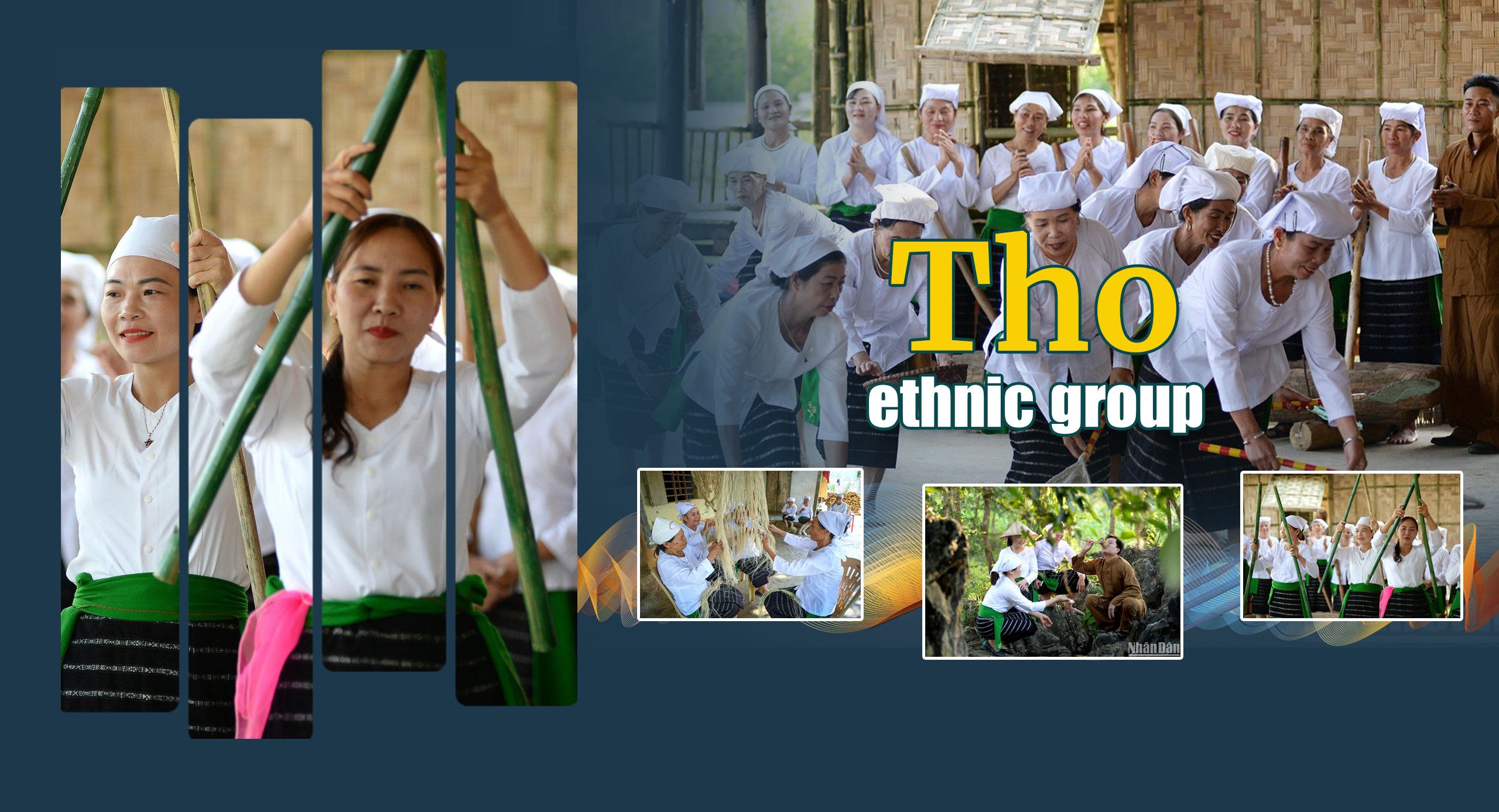
Tho people are one of four ethnic groups belonging to the Viet-Muong group. The current residence of the Tho people is mainly in the midland and mountainous areas of Nghe An province, the intersection of the upstream and downstream migration flows.
1. History
About 4,000 years ago, there was a part of ancient Vietnamese living in the midland and mountainous areas of Nghe An province and a part of Thanh Hoa province. Later, a group moved down to the plains, gradually becoming Vietnamese; other parts still stay in the old residence, the ancestors of today's Tho people.
Other names: Nguoi Nha Lang, Keo, Mon, Cuoi, Ho, Dan Lai, Ly Ha, Tay Pong, Con Kha and Xa La Vang.
2. Geographical distribution
Tho are an ethnic group residing in the midland and mountainous areas of Nghe An and Thanh Hoa provinces. The current residence of the Tho people is the intersection of migration flows from the north to the south, from the lowland to the upland region, the expatriates in the same situation integrate into a common community of the Tho ethnic group.
Tho people include many local groups:
- Tho Mon: Most are of Muong origin, residing in mountainous districts of Thanh Hoa province and some communes of Nghia Dan, Tan Ky and Quy Hop Districts, of Nghe An Province.
- Tho Keo (Keo) lives mainly in Nghia Quang Commune, Thai Hoa Town, Nghe An Province.
- Tho Lam La resides in the communes of the old Lam La canton, Nghia Dan District, Nghe An Province.
- Tho Cuoi lives in Nghia Quang Commune, Thai Hoa Town, Nghe An Province.
- Tay Poong lives mainly in Tam Hop Commune, Tuong Duong District, Nghe An Province.
- Dan Lai - Ly Ha resides in some communes of Con Cuong District, Nghe An Province. In addition, there are some other names, such as Tho Giai Xuan, Con Kha, and Ho. In the past, some of the Tho people were also known as “Xa La Vang”, which was a common name for the most unstable nomadic groups of residents.
3. Population, language
- Population: According to census data of 53 ethnic minorities on April 1, 2019, the total population of Tho people reached 91,430. Of whom, 47,019 are male and 44,411 are female, ranking 23rd among 54 ethnic groups in Vietnam.
- Languages: Vietnamese, Tho, belong to the Viet-Muong language group in the Austroasiatic language family.
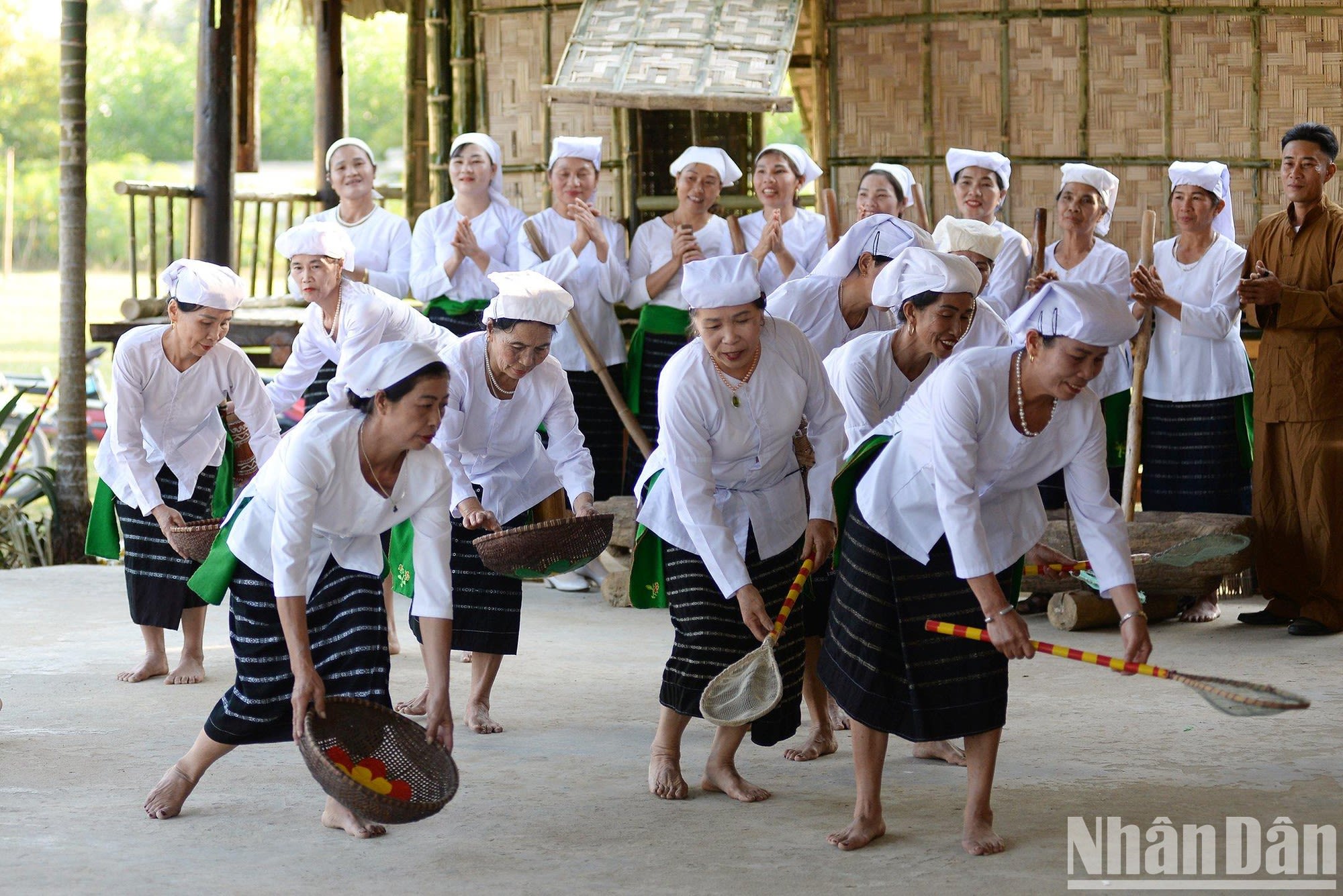
Tho are an ethnic group residing in the midland and mountainous areas of Nghe An and Thanh Hoa Provinces. (Photo: THANH DAT)
Tho are an ethnic group residing in the midland and mountainous areas of Nghe An and Thanh Hoa Provinces. (Photo: THANH DAT)
4. Main features
- Traditional social institutions: Formerly the smallest administrative unit of the Tho people was a village with a village head. In the village, in civil terms, it is Muong. However, this organisation in the Tho community is very faint, not as characteristic as the Muong of the Muong or the Thai people. The basic unit of residence of the Tay Poong and Dan Lai is a village which is set up in high, flat places, near water sources, in the middle of a valley or on gentle slopes.
The Tho family is a patriarchal sub-family, mainly consisting of two generations of parents and children; patriarchy is quite high, in lowland groups there is a clear patriarchal-minority distinction, like the Vietnamese.
- Housing: The traditional house of the Tho people is a house on stilts surrounded by simple forest wood, bamboo, and leaves. In some areas, houses are made in the style of columns, only a knife and axe are needed to build a house. Today, the houses of the Tho people are also in the process of converting from stilt houses to land houses, many houses have built floors like Vietnamese houses in the region.
- Religions and beliefs: The Tho groups all believe in animism, which is the "master" belief. Along with ancestor worship, the Tho people also worship the earth god, the kitchen god, the land god, the god of the land, and all kinds of ghosts (forest ghosts, stream ghosts, tree ghosts and mountain ghosts).
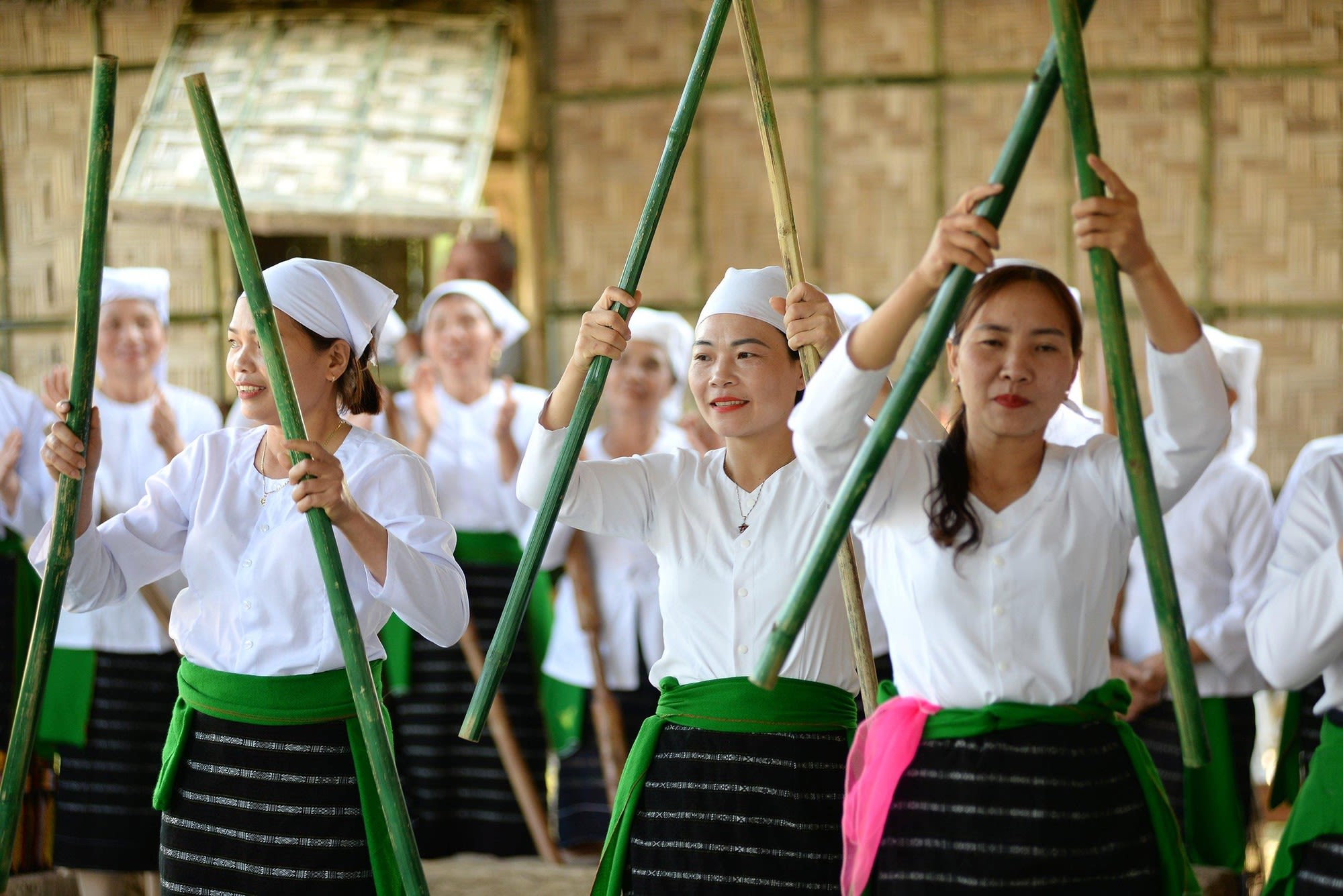
The traditional costume of the Tho women consists of a white shirt and a black and white plaid skirt. Tho women use green belts like Thai women in the region. (Photo: THANH DAT)
The traditional costume of the Tho women consists of a white shirt and a black and white plaid skirt. Tho women use green belts like Thai women in the region. (Photo: THANH DAT)
- Costume: A man's costume includes wide brown crotch pants with a waistband; a short shirt or black shirt, with a purple scarf and wooden clogs. Tho women wear white clothes; skirts of indigo-dyed cotton fabric, woven with horizontal stripes, which, when worn, form a parallel circle around the body. They wear a square white scarf like the Muong and at funerals, they wear a long white scarf like the Vietnamese.
- Marriage: A popular and long-standing custom, unique to the Tho, is the custom of sleeping on the roof, allowing boys and girls to freely talk during festivals and holidays, however, they must not have improper behaviour because public opinion and customary law are very strict. From the nights sleeping on the roof, couples gradually formed, leading to the conduct of the official formalities for a marriage.
- Cuisine: In the past, the highland Tho groups ate glutinous rice, but now most have switched to eating plain rice. In times of famine, they often eat tubers, vegetables and fruits picked in the forest. During holidays and the New Year festival, the Tho people often make banh chung, banh day, and banh gai.
Wine (cassava wine, rice wine, can wine) is preferred by both men and women and is an indispensable thing during the holidays. Besides, both men and women of the Tho group also like to eat betel nuts. The betel nut is used to invite guests on weekdays, New Year's Day and weddings.
- Education: In the past, the Tho people did not have their own writing, only a few people knew Chinese characters. Today, Vietnamese is popular and widely used.
According to the General Statistics Office in 2019, the rate of people aged 15 years and older who can read and write reached 94.9%. The proportion of people at the primary level is 101.4%, people at lower secondary schools is 93.4%, and people in high school is 59.3%. Meanwhile, the rate of out-of-school children is 9.2%.
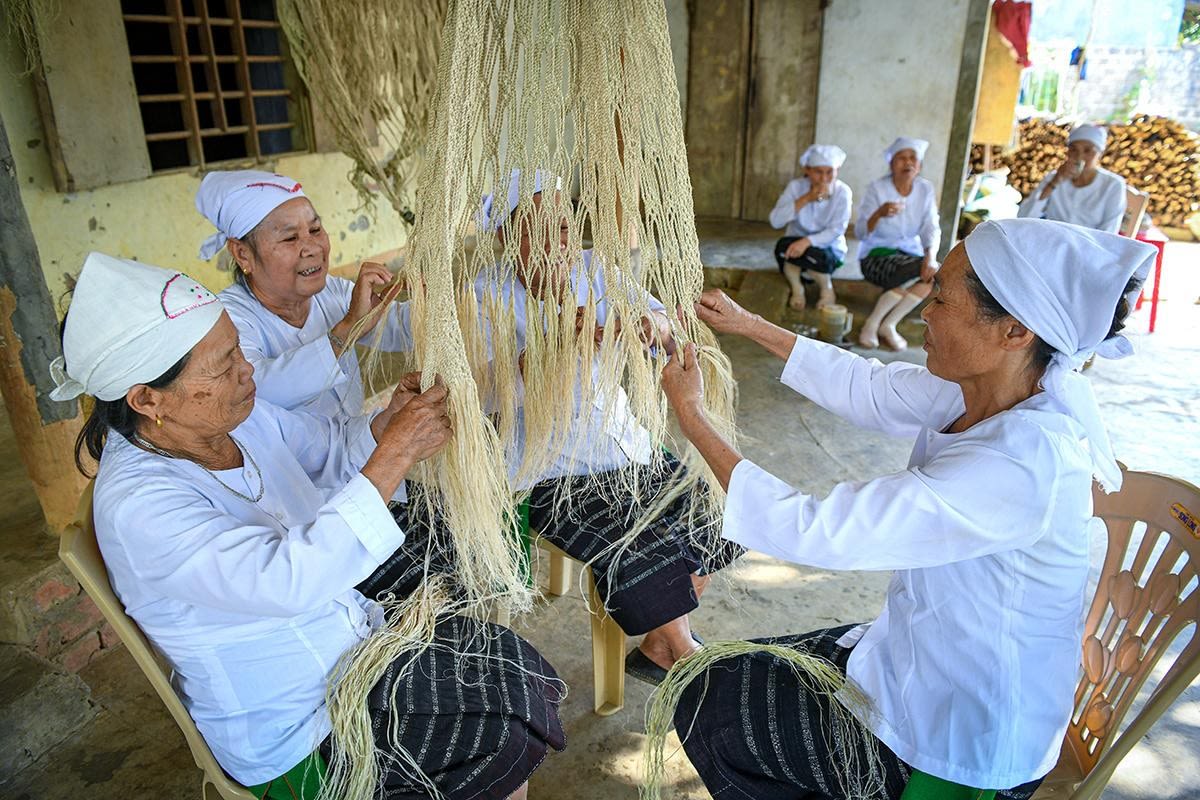
The craft of knitting hammocks not only brings income to the people but also is an intangible cultural heritage of the Tho people. (Photo: THANH DAT)
The craft of knitting hammocks not only brings income to the people but also is an intangible cultural heritage of the Tho people. (Photo: THANH DAT)
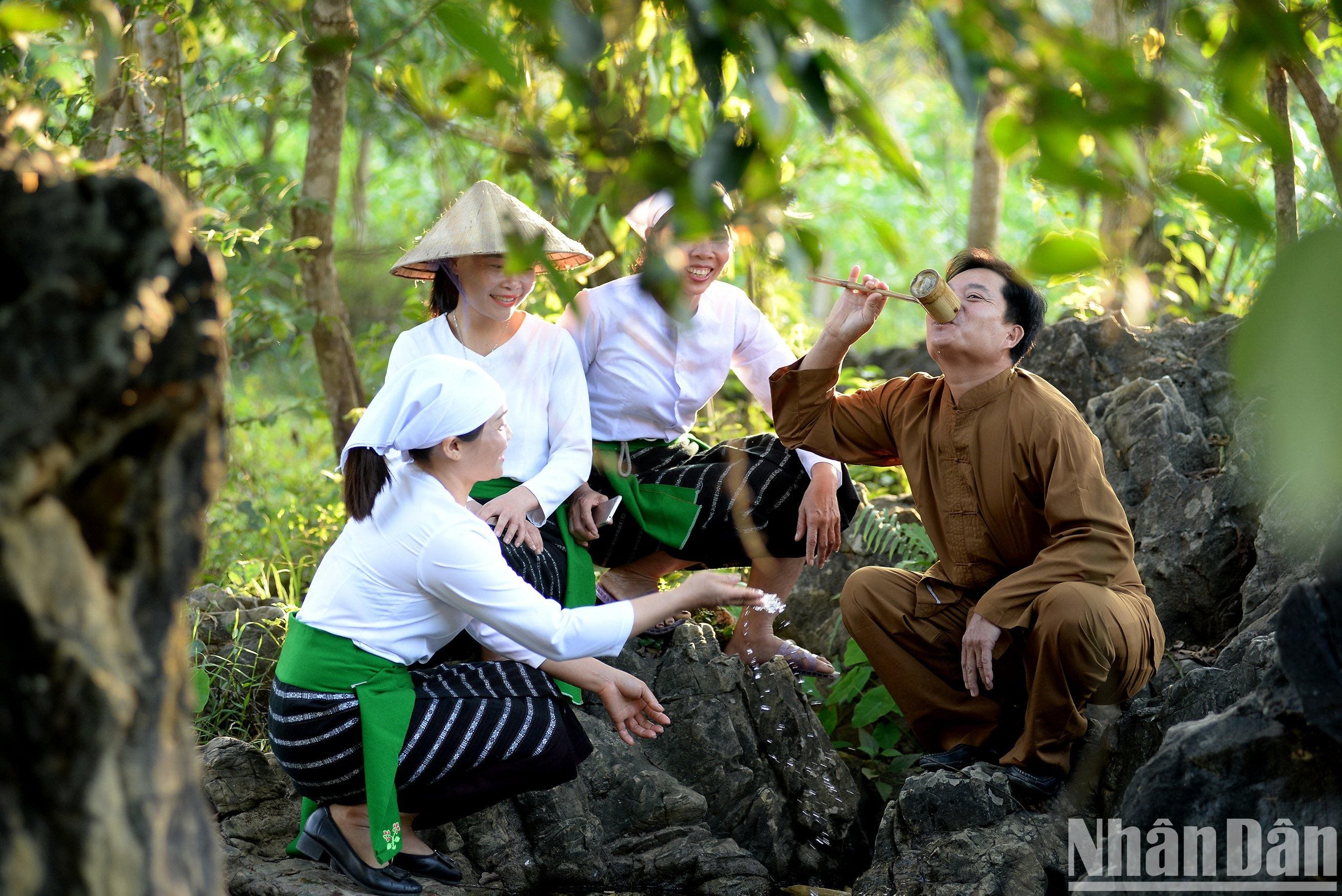
Photo: Thanh Dat
Photo: Thanh Dat
5. Economic conditions
The Tho people live mainly on swidden cultivation, and a small number of them work in wet fields. Food crops grown are mainly rice, then cassava and maize. In the groups of Keo, Mon, and Cuoi, hemp is a plant that is grown a lot and holds an important position in people's economic life. In the Tho culture, fishing is also very developed, hunting and gathering is only developed in some areas, but it has contributed significantly to alleviating difficulties in people's lives.
In recent years, in harmony with the development of the country, the Tho people have implemented a model of standard rural gardens, restored the models of making gai cake and knitting hammocks, step by step increasing income for their families, contributing to preserving the ethnic cultural identity and serving the local socio-economic development.
According to the General Statistics Office in 2019, the unemployment rate in the Tho community was 0.45%; the proportion of labourers working in the non-agricultural sector was 28.6%; the rate of poor households was 13.5%, the rate of near-poor households was 24.4%; 93.2% of households use hygienic water and 98.8% of households use electricity from the grid for lighting.